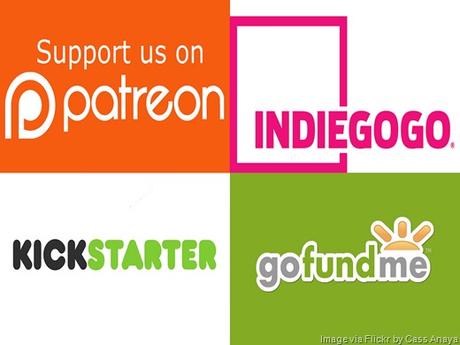 Crowdfunding has come a long way in the last decade with the Internet and many popular platforms, including IndieGoGo and Kickstarter. In fact, crowdfunding now rivals both venture capital and angel funding as the money source of choice for new entrepreneurs. As a small business advisor, I often recommend it as the best alternative for aspiring entrepreneurs.
Crowdfunding has come a long way in the last decade with the Internet and many popular platforms, including IndieGoGo and Kickstarter. In fact, crowdfunding now rivals both venture capital and angel funding as the money source of choice for new entrepreneurs. As a small business advisor, I often recommend it as the best alternative for aspiring entrepreneurs.
But don’t be misled – it is no panacea or shortcut to funding success. According to statistics, more than two-thirds of crowdfunding campaigns do not meet their monetary goal and have to return anything they do collect. That’s not as high as the failure rate with professional investors, but it should convince entrepreneurs that even the crowd requires you to do your homework first.
Based on my experience, and input from the experts I know, here is a quick summary of the key strategies and practices that can be instrumental to your success in your crowdfunding efforts:
-
Build a support community before launching a campaign. Successful crowdfunding requires anticipation and early momentum, which can best be built by social media, viral videos, and traditional marketing. If you see little traction from these efforts, it may be time to rework your idea before making a bad first impression with the crowd.
-
Prepare with the same intensity as finding angels and VCs. There is no easy money for funding a business, so prepare with the same planning, prototyping, and dedication you would expect from someone taking your own money. You can’t build and run a crowdfunding campaign in your free time. Seek advice from peers who have succeeded.
-
Avoid equity crowdfunding if you need multiple rounds. Crowd investors with little or no investing experience can be very high maintenance. Such a messy investor pool will make the company less attractive to subsequent professional investors. Experienced bankable entrepreneurs will find conventional raises have a lower "cost" of capital.
-
Time your campaign around a prototype, not just an idea. People want to see that you have something before they commit real money. Anyone can come up with an idea, but few can execute. I recommend a polished minimum viable product (MVP), which you can demonstrate in a video, rather than asking people to visualize your solution.
-
Calculate carefully how much funding you really need to ask for. Asking for too large an amount is the surest way turn people off, and asking for too little will only cause you to fail in delivery. Making something awesome always costs more than you expect, and starting a business is hard. You need just enough of a start to qualify for VC funding later.
-
Move fast after crowdfunding to stay ahead of competitors. Be aware that potential competitors are monitoring crowdfunding campaigns for market interest and solutions. Your pricing, design and feature list, in addition to your exact launch timing is there for anyone to react to. Successful startups are always working one generation ahead.
-
Crowdfunding success does not assure business success. Many successful campaigns, including iBackPack, Kreyos Smartwatch, and Ubuntu phone, have failed as a business due to inability to deliver, poor launches, or one of the many normal business challenges. Plan for and keep your focus on business success, not just funding success.
-
Don’t expect crowdfunding traction for enterprise products. If your solution is aimed primarily at businesses (B2B) versus consumers (B2C), then I recommend more conventional fundraising. Regular people in the crowd are less likely to understand or care about more complex business systems, such as manufacturing or billing.
Thus, even though crowdfunding is here in a big way, and projected by Statistica to grow almost 30 percent annually to reach US$26 billion in 2022, I don’t see crowdfunding replacing or crowding out angels and VCs in the near future. There is just never enough money to feed the startup beast, and it’s always nice to have another a great alternative.
If you want your share, be sure to heed these reality checks, and don’t hesitate to get some advice and counsel from peers and advisors who have been there before you. Very few crowdfunding campaigns lead to the success of the Pebble Watch, or the Oculus Rift acquisition by Facebook for US$3 billion. But if you do the job right, you could still be the next one.
Marty Zwilling

